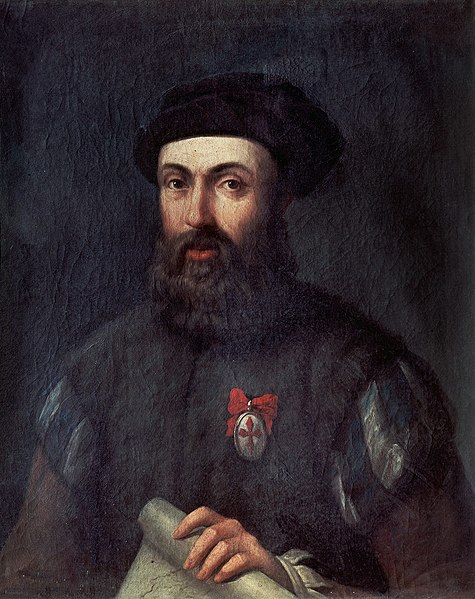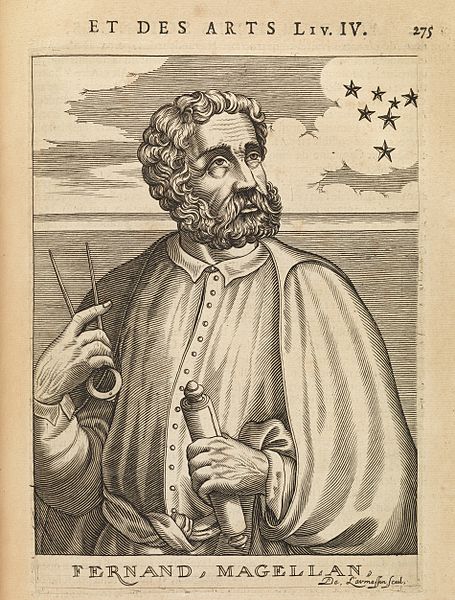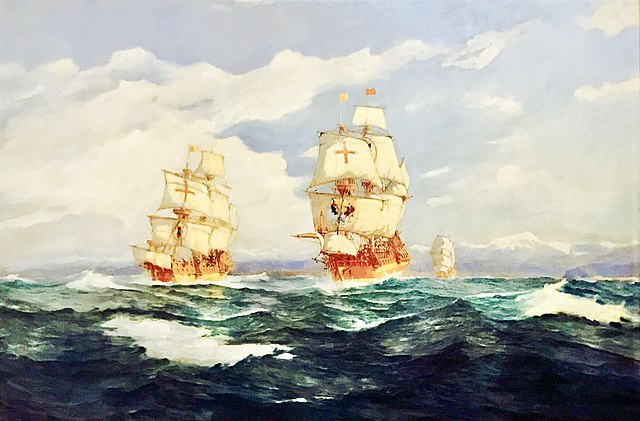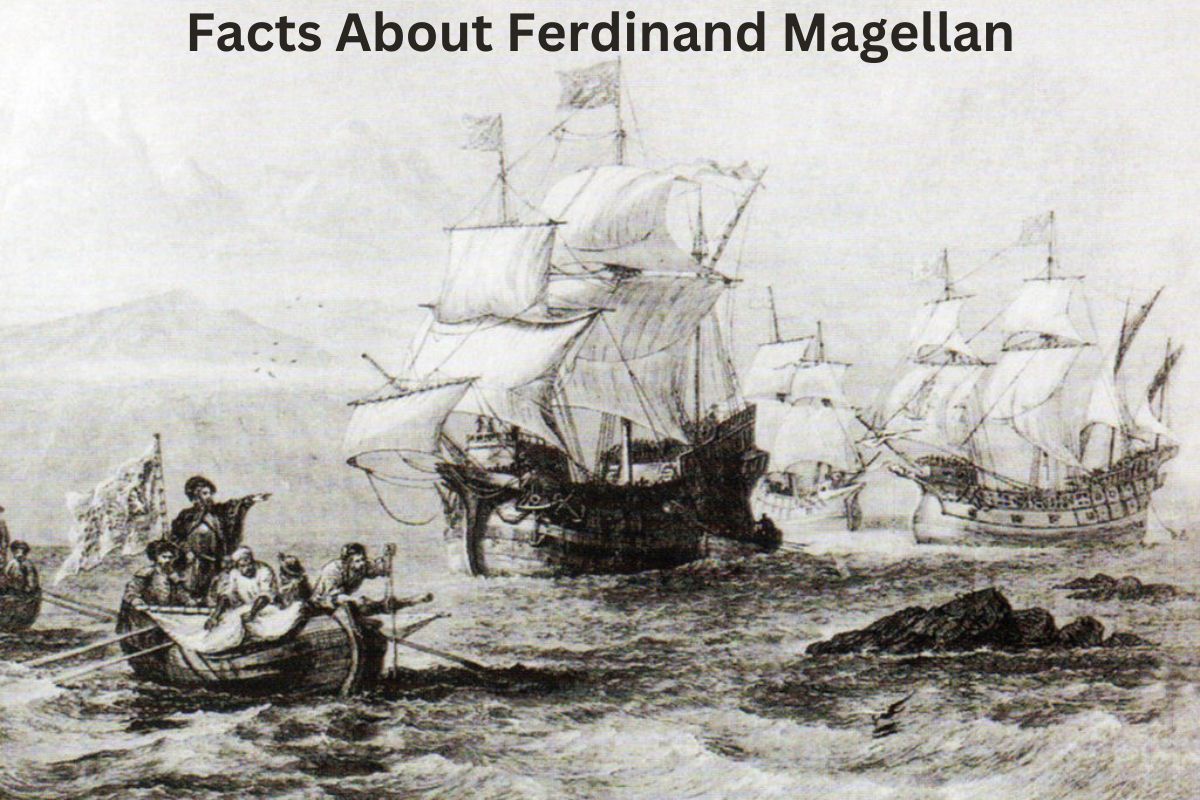Ferdinand Magellan was famous for leading the first circumnavigation of the globe. He set out on this expedition in 1519 with a fleet of five ships and 270 men, with the goal of finding a western route to the Spice Islands.
Although Magellan was slain in the Philippines before finishing the expedition, one ship and 18 sailors captained by Juan Sebastian Elcano eventually returned to Spain in 1522, completing the first circumnavigation of the world.
Magellan is also credited with discovering the Magellan Strait, which joins the Atlantic and Pacific Oceans, and with naming the Pacific Ocean, which means “peaceful” in Spanish.
Ferdinand Magellan Facts
1. He was born in a small hamlet in Portugal
Ferdinand Magellan was born in 1480 or 1481 in Sabrosa, a tiny hamlet in northern Portugal. He was born into a noble family and hence had an excellent education.
Magellan went on to become one of history’s most famous explorers, and his expeditions were critical to European discovery and colonization of the world.
2. Magellan was well educated
Ferdinand Magellan was the third son of Pedro de Magalhães, a nobleman and mayor of the town of Sabrosa.
Also Read: Timeline of Ferdinand Magellan
Magellan acquired a good education in courtly manners, navigation, and military tactics as the son of a nobleman. He received navigation and seamanship instruction from seasoned sailors while studying at the Portuguese court.

His education and background were excellent preparation for a career as an explorer, and he went on to become one of history’s most famous explorers.
3. Magellan served in several expeditions to the East Indies
Before he led the famous expedition that would become the first circumnavigation of the globe, Ferdinand Magellan served in several expeditions to the East Indies.
He went to Malacca, a city in modern-day Malaysia that was a major commerce center in Southeast Asia.
Also Read: Ferdinand Magellan Accomplishments
He also visited the Moluccas, a series of Indonesian islands known as the “Spice Islands” because they were the world’s principal supply of nutmeg and cloves.
During his travels to the East Indies, Magellan obtained vital expertise in navigation, trade, and diplomacy, which he would use later in his discoveries.
4. He persuaded King Charles I of Spain to fund his expedition
Ferdinand Magellan embarked on his most famous mission, the circumnavigation of the globe, in 1519.
He had persuaded King Charles I of Spain to fund his expedition, which attempted to locate a western passage to the Spice Islands in modern-day Indonesia. Magellan set out from Seville, Spain, with five ships and 270 men.
The expedition would take nearly three years to accomplish and would be fraught with difficulties such as bad weather, mutiny, sickness, and wars with indigenous peoples.

5. Magellan was killed in the Philippines
In 1521, Ferdinand Magellan was killed in the Philippines after a combat with the natives of the island of Mactan.
Magellan had arrived on the island with a small group of men to convert the locals to Christianity and establish Spanish sovereignty in the area. But, he was met with tremendous opposition from the native leader Lapu-Lapu and his warriors.
Magellan was wounded by a spear during the combat and died as a result of his injuries. Despite Magellan’s death, his crew went on without him, finally completing the world’s first circumnavigation in 1522.
6. Only 18 men remaining from the original crew returned
In 1519, Ferdinand Magellan’s fleet of five ships and 270 men set out on the expedition to circumnavigate the world. The ships were named Trinidad, San Antonio, Concepción, Victoria, and Santiago.
Unfortunately, the expedition was fraught with difficulties, including mutiny, desertion, sickness, and clashes with indigenous peoples. Only two ships remained when the armada arrived in the Philippines in 1521: the Trinidad and the Victoria.
After Magellan was slain in battle, the Trinidad attempted to sail west across the Indian Ocean to return to Spain, but the ship was damaged and the crew was taken by the Portuguese.
Under the command of Juan Sebastian Elcano, the Victoria carried on and completed the first round of the world in 1522, with only 18 men remaining from the original crew.

7. Credited with discovering the Strait of Magellan
Ferdinand Magellan is credited with discovering the Strait of Magellan, a narrow route connecting the Atlantic and Pacific Seas at South America’s southern tip.
On his trip to round the globe in 1520, Magellan discovered the strait. In honor of his discovery, the strait is named after him.
The discovery of the Strait of Magellan was an important accomplishment since it opened up a new path for ships to travel from the Atlantic to the Pacific, avoiding the hazardous waters surrounding Cape Horn.
The Magellan Strait is now a major transportation route for cargo and passenger ships moving between the Atlantic and Pacific Seas.
8. A sailor kept a journal of Magellan’s circumnavigation
Antonio Pigafetta was an Italian scholar and sailor who was one of 18 survivors of Ferdinand Magellan’s circumnavigation mission.
Throughout the expedition, Pigafetta kept extensive notebooks, describing everything that transpired and providing vital insights into the cultures, customs, and geography of the areas they visited.
Pigafetta’s journals are regarded as one of the most valuable sources of information regarding the trip since they provide a first-hand account of what happened.
“Magellan’s Voyage: A Narrative History of the First Circumnavigation” was a book based on his notebooks that was later published. Pigafetta’s papers have become an essential historical record of Magellan’s expedition, and scientists and historians continue to study them to this day.
9. They traveled almost 42,000 miles in total
The Victoria, the sole ship from Ferdinand Magellan’s mission to accomplish the first circumnavigation of the world, covered almost 42,000 miles in total.
From 1519 to 1522, the expedition lasted about three years and covered a distance of around 14,460 leagues, or approximately 69,000 kilometers.
The expedition was fraught with difficulties, such as bad weather, mutiny, disease, and clashes with indigenous peoples.
Despite these difficulties, the crew of the Victoria persevered and completed the world’s first circumnavigation, showing that the earth was round and creating new trade routes that would unite the world’s continents and pave the path for global commerce.
10. King Manuel I of Portugal attempted to stop Magellan
King Manuel I of Portugal attempted to thwart Ferdinand Magellan’s ambition to circumnavigate the globe.
Portugal and Spain were contending for control of the lucrative trade routes to the East Indies at the time, and King Manuel I considered Magellan’s expedition as a danger to Portuguese interests.
He dispatched ships to catch Magellan and prevent him from leaving Lisbon, but Magellan evaded the Portuguese ships and sailed for Spain with his own fleet.
The occurrence sparked a diplomatic conflict between Portugal and Spain, as both claimed the right to explore and trade in the East Indies.
The issue was eventually settled when the Treaty of Tordesillas was signed in 1494, dividing the world into distinct zones of influence for Portugal and Spain.
Unfortunately, the treaty did not resolve all of the two countries’ disagreements, and tensions remained high for many years.
